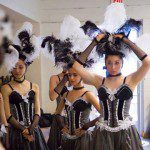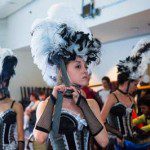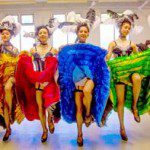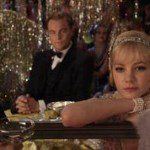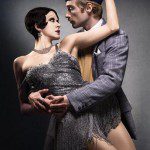A Return to Hemingway and Fitzgerald
By • May 9, 2013 0 2464
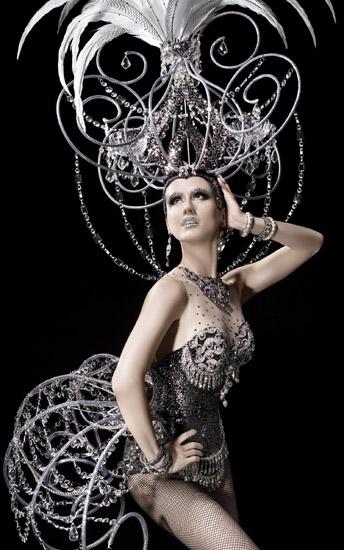
The boys are back.
We’re talking Ernie and F. Scott, Ernest Hemingway and F. Scott Fitzgerald, the American chroniclers of the Lost Generations, the major contenders for the authors of the GAN, otherwise known as the Great American Novel, the major actors in the idea of novelists and writers as personalities and celebrities.
We’re talking “The Sun Also Rises” and “The Great Gatsby. We’re talking the star-crossed lovers Jake Barnes and Lady Brett Ashley and Jay Gatsby and Daisy Buchanan. We’re talking the new ballet of “The Sun Also Rises” by the Washington Ballet May 9 through 12 at the Kennedy Center’s Eisenhower Theater. We’re talking the buzz and anticipation around Australian director Baz Luhrmann’s film version of “The Great Gatsby,” which has already had a red carpet premiere in New York and has critical tongues, pens, blogs, and tweets vibrating and shaking up iPads and iPhones around the world.
We’re talking with Septime Webre, the artistic director of the Washington Ballet, who knows a little something about both writers and both works. In 2010, Webre staged the ballet version of “The Great Gatsby,” at the time the most expensive ballet ever done by the Washington Ballet, and staged it again in 2011. Now, he’s taking on that most macho exemplar of honor, duty, doing things cleanly and straight and honest, Ernest Hemingway’s novel, “The Sun Also Rises,” which happens to be just as visually and atmospherically fetching as “The Great Gatsby.”
“They were very different men,” Webre said, as we talked underneath giant masks that would be part of a 1920s Spanish street celebration scene for the running of the bulls in Pamploma, Spain. “They were very different writers. They lived differently, and they were stylistically different, especially in those two books. Fitzgerald’s style was very lyrical, poetic. Hemingway wrote in short, terse, sharp sentences. In fact, somebody told me that my choreographic style—the moves, the sharp, short movements—corresponded very much to Hemingway’s.”
We talked before the beginning of a rehearsal at a studio in the Washington Ballet school and headquarters on Wisconsin Avenue, with French waiters, gendarmes, men dressed in boxer (as in fighters) shorts, Can-can dancers, elegantly thin young women in ballet slippers as street walkers, partiers and the like, wearing outfits with patterned shades of gray, black and white, arrived casually.
“It doesn’t initially sound very plausible, I suppose,” Webre said. “The idea of ballet of Hemingway’s work. I suspect he may have thought that ballet was not manly, somehow, which is ironic.”
Webre laughed, but the Cuban-born choreographer also respects the man and his writing.
“The more I thought about it—and by the way I was at the running of the bulls last year in Pamploma and I’ve lived to tell about it,” he said. “But the energy, this very Spanish culture thing, not just the running, but bullfighting. And it’s hard to understand for many people, but it’s about grace and courage and honor, that’s certainly what Hemingway believed. I saw bullfights in Mexico when I was a kid in Texas. And I read ‘Death in the Afternoon,’ [Hemingway’s dense and detailed book-length essay on everything you ever wanted to know about bullfighting].”
“The words may be short and sentences lean and direct,” Webre said. “But this book contains a rich, detailed world—you have the 1920s expatriates in the 1920s café world. There were streetwalkers and artists, and writers, that whole world inhabited by Jake Barnes, the writer who was rendered impotent by a wound he suffered in the trenches in World War I. There’s Lady Brett Ashley, who loves him deeply but is promiscuous because of her frustration and there’s the cynical writer and boxer Robert Cohn. You have the music of the times—we have E. Faye Butler again, and we have composer Billy Novack, and blues , we have tango and flamenco, and Hemingway’s words. You know, you look underneath the sparse language—and there’s such a whole, detailed world teeming, a kind of spirit, anguished and frenetic, of disillusionment about the war and its aftermath.”
You could look at this ballet version of “The Sun Also Rises” as a kind of bookend to “The Great Gatsby,” which Webre also staged, recreating the America’s Roaring Twenties, an equally frenetic world about loss and illusion, in which the dance and dancers (Jared Nelson, who plays Jake also danced Gatsby) fleshed out the dreams we dreamed after reading “Gatsby” for the first time.
“The Sun Also Rises” opens May 9 and ends May 12. Right in the middle of the run on May 10 is the nation-wide opening of Luhrmann’s “Gatsby” with Leonardo DiCaprio as Gatsby, Carey Mulligan as Daisy, and Tobey Maguire as Nick Carraway, the narrator. It’s coming with all the attendant boom boom a Luhrman-DiCaprio entry might engender. Critics who have seen it are already buzzing and bumblebeeing about it: some love it, others probably not so much. The thing to remember is that Luhrmann is not the first to go after Gatsby. There have been several versions, including a silent version, a 1940s version starring Alan (“Shane”) Ladd and a 1974 big, expensive lavish version starring Robert Redford as Gatsby, Mia Farrow as Daisy and Sam Wasterson, (not yet a DA) as Nick, Bruce Dern as Tom Buchanan as well as Lois Chiles and Scott Wilson. Jack Clayton directed this version, which made a lot of money inspired 1920s’ clothing booms and styles, perfumes and maybe even F. Scott’s, the Georgetown restaurant.
Something similar may happen with the current version. And it’s got Luhrmann’s way with against-the-grain music with a stone-cold crazy soundtrack which is very now and the next thing, but 1920s, not quite. Thus, there’s buzz about the hot single from Gatsby being “Young and Beautiful,” the evocative beyond-genre moody song penned and sung by singer-songwriter Lana Del Rey. Only Taylor Swift is missing from contempo pop music makers on the sound track: Jay-Z, Beyonce, Jack White of the White Stripes, Emeli Sande and the Bryan Ferry Orchestra, Will.i.am, Fergie with Q Tip and Goonrock, Gotye, Coco O of Quadron, Kanye West and Jay-Z with Fran Ocean and the Dream, the inimitable Florence and the Machine and the XX.
Hemingway’s books have also been popular with movie makers, who never get it right, according to Ernie. He liked Ava Gardner as a Hemingway heroine in “The Snows of Kilimanjaro” and “The Sun Also Rises.” There have been three versions of “To Have and Have Not,” the most famous being the one in which Lauren Bacall asks Bogie if he knows how to whistle, two of “A Farewell to Arms”, at least one of “For Whom The Bell Tolls,” and two of the short story, “The Killers,” the last version seeing Ronald Reagan’s last acting job as a mobster.
In the race for the Great American Novel, both “The Sun” and “The Great” stood in the top five along with “Moby Dick” and “The Adventures of Huckleberry Finn.” Hemingway won a Nobel Prize for literature but ended his life by suicide. Fitzgerald married the ravenously talented and wild Zelda and died young at 41 in Hollywood of a heart attack.
At the rehearsal, you could spot her right away. Dressed in thin black, an intensely, beautiful face, often, as dancers must, staring into a mirror, like a fighter shadowboxes. This was Sona Kharatian. This was Lady Brett Ashley if she wore ballet slippers.
“It is a challenge to be Lady Brett,” said Kharatian, who hails Armenia and has been with the company for 14 years. “You have to let people see her frustration, her passion. She wants attention. She loves Jake and wants to be with him, but she goes to other men. She’s kind of a tragic figure. ou have to be able to speak with body language, not just dance, but how you carry yourself, your persona coming through your body.”
“It’s very different from what I’ve done,” she said. Kharatian was the Red Queen in “Alice,” Juliet in ‘Romeo and Juliet” and was Myrtle—the mistress of Tom Buchanan in “Gatsby,” “That’s a different kind of role,” she said.
“The last lines of the books tell you everything about the differences between Hemingway and Fitzgerald as a writer,” Webre said, as he quoted first “The Great Gatsby” and then “The Sun Also Rises.” “So we beat on, boats against the current, borne ceaselessly into the past.” “Oh Jake, we could have had such a damned good time together,” Lady Brett. “Yes,” Jake replies. “Isn’t it pretty to think so?” The End.
In a movie, Gatsby and Daisy are young and beautiful forever. On the stage at the Kennedy Center the can-can dancers, Lady Brett, the soldiers, the bullfighters, bear us swirling, ceaselessly into the past, like passengers on the Kilimanjaro machine which writer Ray Bradbury imagined to take Hemingway to a better ending.
- Aurora Dicke as Chandelier Lady in Hemingway The Sun Also RIses. Creative and Art Direction: Design Army | Photo by Dean Alexander.
- Jordan Wright
- Jordan Wright
- Jordan Wright



